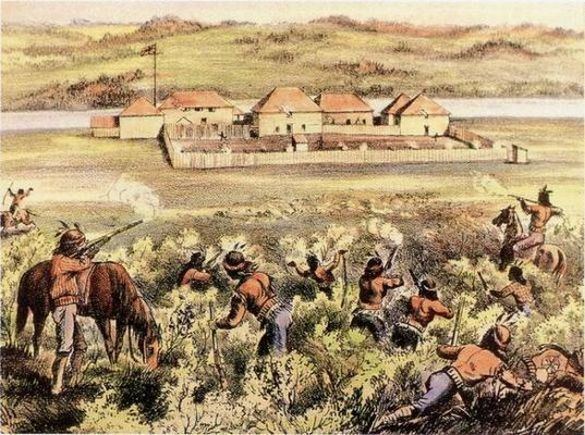Location Saskatchewan, Canada Website Parks Canada Year built 1830 | Governing body Parks Canada Province Saskatchewan | |
 | ||
Address Frenchman Butte, SK S0M 0W0, Canada Similar Fort Carlton, Fort Battleford, Katepwa Point Provincial, Cannington Manor Provincial, Fort de la Corne | ||
Fort pitt provincial park
Fort Pitt was a fort built in 1830 by the Hudson's Bay Company that also served as a trading post on the North Saskatchewan River in Canada. It was built at the direction of Chief Factor John Rowand, previously of Fort Edmonton, in order to trade for bison hides, meat and pemmican. Pemmican, dried buffalo meat, was required as provisions for HBC's northern trading posts.
Contents
Fort Pitt was built where the territories of the Cree, Assiniboine and Blackfoot converged. It was located on a large bend in the river just east of the present day Alberta-Saskatchewan border and was the major post between Fort Edmonton and Fort Carlton. In 1876, it was one of the locations for signing Treaty 6. It was the scene of the Battle of Fort Pitt during the Northwest Rebellion of 1885.
The site was designated a National Historic Site of Canada in 1954. It is now operated as the Fort Pitt Provincial Park.
History
Fort Pitt (1829–1890) was a prairie trading post of the Hudson's Bay Company on the North Saskatchewan River about 10 miles east of the Alberta border. It was on the north bank of the river on a flat above a bluff. It traded mainly in pemmican and buffalo robes with the Blackfoot, Cree and some Métis. There was a fair amount of agriculture and horse-rearing. It was named after Thomas Pitt, a member of the HBC governing board from 1810 to 1832.
The fort was established in September 1829 by HBC company clerk, Patrick Small, the son of North West Company partner, Patrick Small, the brother-in-law of David Thompson and John MacDonald and the son-in-law of David Hughes. During the first winter Small and his men had to live in tents, and building was not completed until the spring of 1831. It was closed in 1832 for fear of attack by surrounding Cree and Blackfoot, though it reopened in the fall of 1833.
In 1843, John Rowand, the son of John Rowand of Fort Edmonton, became master. In 1854 the elder Rowand, on his way to retirement, visited his son. While attempting to break up a fight between two voyageurs, he had a heart attack and died. Artist Paul Kane visited the fort in 1848.
In 1870, a large smallpox epidemic struck the North Saskatchewan. In 1872 it was said that there were more horses kept at Fort Pitt than any place on the Saskatchewan. 1873 was the last year that large Buffalo herds were seen at the fort. Treaty 6 was signed here in 1876.
Battle of Fort Pitt
In 1883, 25 North-West Mounted Police were sent to Fort Pitt under the command of Francis Dickens, the son of the novelist Charles Dickens. In 1885, the fort was raided by Big Bear's Crees, though, among the inhabitants, only a single officer was killed. When Dickens agreed to negotiate with the attackers, Big Bear released the remaining police officers and destroyed the fort.
Closure
The next September, the fort was rebuilt by Angus McKay. In 1887, a branch post was built at Onion Lake about 20 mi (32 km) to the northwest. In 1890 everything was moved to Onion Lake, and Fort Pitt was closed.
